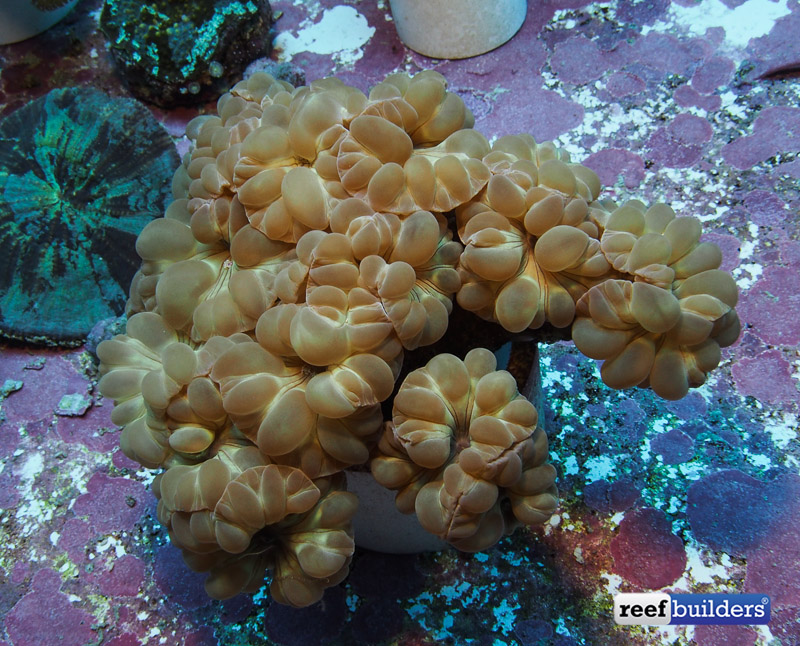Plerogyra discus is a very unusual ‘species’ of coral which could be entirely real, or it could be the figment of one coral taxonomist’s imagination. If you don’t know already, fox corals (Nemenzophyllia) and bubbles corals (Plerogyra) are closely related and now believed to belong to a new and undescribed family of corals.
Any given day of the week, only a newbie could confuse the meandering corallites and flowing silky mantle of fox coral for the single large corallite and huge bubble shaped vesicles of a bubble coral. But somewhere in between fox and bubble corals, there is a species called Plerogyra discus which really seems to straddle the divide between Plerogyra and Nemenzophyllia.

We’ve always been intrigued by Plerogyra discus from seeing it in books and wondered what this coral would look like. Would this coral stand out in real life as distinct from bubble and fox coral or would we really have to visually analyze it to ascertain the coral’s true identity? Of course the answer would happen to be ‘both’.
Earlier this year while perusing the coral flats at Pacific Aqua Farms in Los Angeles California, known for having the best source of corals and livestock from the Solomon Islands, we spotted a coral specimen which appeared exactly as we imagined that Plerogyra discus would look; basically a fox coral with overly inflated vesicles at its perimeter.

We picked up this coral and put it in an area of moderate flow for nearly a month, really giving it plenty of time to settle into captive life before handling it and making any more judgments about its ‘true’ identity. Once we were confident that the ‘Fox Bubble’ was doing great and healthy, we decided to propagate this coral and sacrifice one piece to more closely examine the skeletal elements that would help set the record straight.

The principal identifying characteristic that Veron used to distinguish Plerogyra discus from the Nemenzophyllia genus is the presence of a median wall in the valley of the corallite. The skeleton of both genera are remarkably similar but this one primary feature is quite hard to miss, and an easy morpho-metric to check for.
To be quite honest, we wholly expected that our eyes were playing tricks on us regarding this fox bubble coral, and up until we examined the skeleton, it was assumed that this was just a fox coral with particularly unique flesh. However, once we examined the one single dead corallite and also sacrificed one corallite by cutting across its skeleton, there was a clearly open valley in the corallite with the median wall obviously lacking.

In the end it doesn’t really matter what this coral is, be it a fox coral, bubble coral, or this very esoteric species that walks the line between these two closely related groups of corals. In the end what makes us smile is that we found a neat coral to play with, we fragged it up and have shared with a few others to see how this coral will fare in captivity over the long term.




